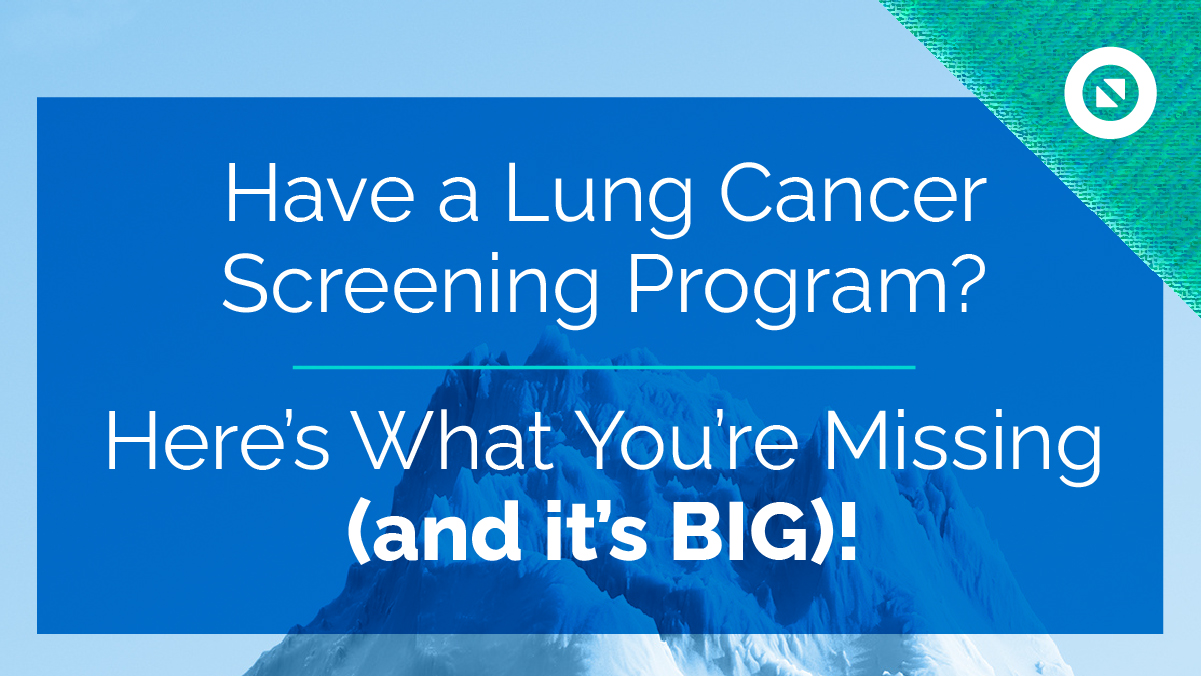According to the CDC, cancer is the second leading cause of death in the United States. Lung Cancer specifically is America’s deadliest, killing just shy of 146,000 Americans each year (CDC, 2017). It is particularly destructive once symptomatic spread takes place. According to the 2020 NIH SEER Cancer Review only 5% of patients survive the 5-year mark once lung cancer spreads to other organs. Conversely, survival rates skyrocket to 57% if the cancer is detected early and contained locally. Unfortunately, at present, only 16% of cases are able to be diagnosed this early and the grim fact remains that more than ½ of all people with lung cancer currently die within a year of diagnosis. Given this background, to positively influence community health, an important goal for healthcare professionals is to find and diagnose lung cancer at an early stage, when it is more likely to be successfully treatable and survivable.
To that end, health technology company Eon has created a cloud-based platform designed to accurately identify and assess incidental pulmonary nodules (IPN’s) located by radiology in imaging exams.
Eon’s Incidental Pulmonary Nodules solution uses an advanced form of artificial intelligence called Computational Linguistics (CL) developed to understand and interpret the structure of written English. When used in Eon’s proprietary Eon Patient Management (EPM) platform, CL is able to locate and assess IPN’s at a 98.3% accuracy rate by pulling raw data directly from facility radiology reports as they are created. Once identified, EPM is able to assess nodule specifics such as size, shape, location and morphology, and then uses embedded Fleischner Society best practices guidelines to stratify risk in order to suggest a next course of treatment for the patient.
EPM then uses sophisticated RPA tools to automate routine management tasks, customized differently for each patient risk category. This allows a program to focus important resources on high-risk patients, while using RPA to automate many tasks for the longitudinal care and follow-up communication for low-risk patients. EPM automates scheduling reminders for recommended next steps of care for all patients, including reminders for all follow-up care. This frees your patient navigators and staff to focus on the 20% of patients who are MOST AT RISK of cancer to ensure best use of resources and to coordinate follow-up procedures for improved patient health.
Why is this important for YOU?
Reason 1: Eon’s priority is to find and treat lung cancer at its earliest stage, when it is localized and has the best survival rates.
Approximately 1.5 million IPN’s are identified by radiology every year but at present less than 30% of these get follow-up care according to recommended guidelines. Eon’s CL accuracy rate of 98.3% and precision rate of 98.1% ensures that no nodule located by radiology goes unnoticed in your facility. The open-structured CL platform runs constantly in the background, so your radiologists never have to modify workflow for data to be captured. The efficiency at which Eon locates, assesses and prioritizes nodule treatment means a program can effectively deal with a large number of patients safely and efficiently while freeing navigators or nurse managers to personally follow up on those high-risk patients who need the most attention to ensure treatment protocols are met.
Reason 2: Hospital systems across the U.S. are looking for areas from which to drive INCREASED REVENUE.
Each IPN captured by Eon constitutes a finding from which revenue can be derived. After performing a retrospective analysis, a large IDN client-partner found that each IPN located represented about $3,491 in new revenue over the treatment span of the patient. Further data shows that for every 1,000 chest CTs and 100 LDCT scans, yearly revenue increases to $1,178,213 for a facility. Additionally, the longitudinal tracking ability of EPM ensures that patients stay with your facility for the duration of care, maximizing imaging and procedure revenue on a per-patient basis. Finally, Eon has expanded its software solution to additional disease states, identifying and tracking AAAs, pancreatic cysts, thyroid nodules and more. Like pulmonary nodules, each new finding represents an opportunity to improve patient health through procedural follow-up, driving new revenue for your facility.
Lung cancer progression can be very rapid, and any delay in treatment can mean the difference between multiple-stage progression, and potentially life and death for those people with unidentified pulmonary nodules. If your facility goals are to improve community health while increasing system revenue, the 98.3% accuracy of CL in locating and assessing IPNs as well as the longitudinal patient tracking features to ensure compliance and follow-up means EPM as a technology platform can be a valuable partner for your facility as you look to the future.

